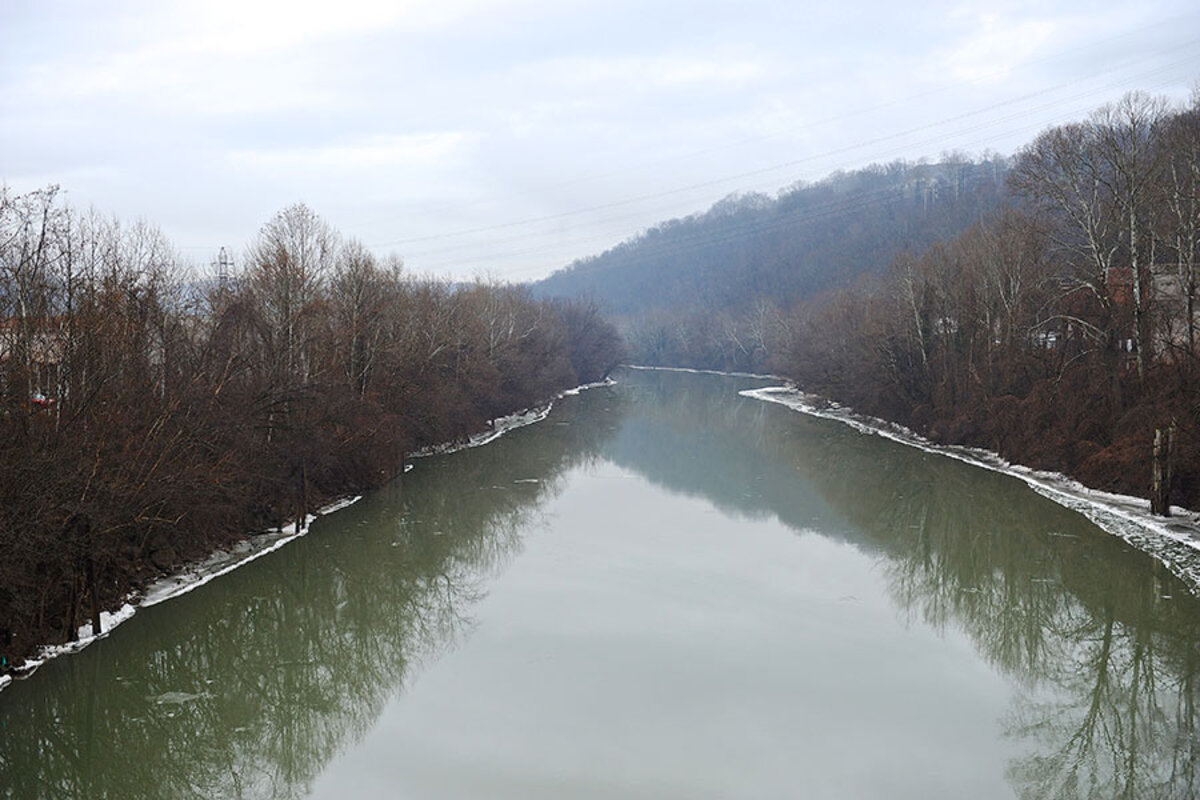Cities can learn from crises like Flint. Atlanta is proof.
Loading...
| Atlanta
After Atlanta was forced by federal courts in the 1990s to spend $1 billion to upgrade a long-ignored water system, paying for water now takes up more than 2 percent of the city’s median household income.
Yet even that $152 monthly water bill didn’t dissuade Atlantans from approving a new tax last year to fund what may once have been an unthinkable extravagance in one of the nation’s wettest states: A $300 million, 2.4 billion gallon raw water storage project that involves an abandoned quarry, an Ohio-built deep-boring machine to cut five miles of granite tunnels, and dynamiting that begins on Friday.
The decision to expand the city’s emergency water supply from three days to a month in case of drought or contamination was made before the water-contamination crisis in Flint, Mich.
Yet it’s clear that other high-profile incidents of spoiled public water supplies – including the 2014 Elk River chemical spill in West Virginia, the mining waste spill in Colorado’s Animas River, and the drinking water ban in Toledo, Ohio – did have an impact.
Atlanta's decision to proactively spend big money on water is part of a more fundamental acknowledgement of a vulnerable public water supply, experts say.
“Incidents like West Virginia – it’s real,” Jo Ann Macrina, the Atlanta watershed director, .
The United States Environmental Protection Agency estimates that US taxpayers need to pony up $1 trillion to get the nation’s water infrastructure up to code. Currently the US public water system gets a “D” grade from the American Society of Civil Engineers. Failing to upgrade the nation’s pipes could put at risk 700,000 jobs and $500 million in personal income, given disruptions to commerce from tainted water, the group estimated this year.
Officials here in Atlanta made similar calculations when voting for the quarry tunnel. They figured that running out of good raw water could cost the city $100 million a day.
Atlanta is not alone in taking a harder look at the need for audacious projects to guarantee potable water.
In a recent blog post on water infrastructure, Joseph Kane of the Brookings Institution wrote: “Regions are adapting to a variety of population pressures … and other challenges, which is driving the creation of new resilience strategies … from Norfolk to Chicago.”
Last week, the White House pledged more than $5 billion to fix water problems around the country, saying that “water challenges … are impacting millions of lives and costing billions of dollars.”
The public more broadly is also aware of the problem, according to . Sixty-four percent of Americans said last year that US mayors need to be advancing major infrastructure projects. After all, three-quarters of all infrastructure projects in the US are funded locally. Americans are conserving water, too, suggesting growing awareness. Water consumption has gone down by 17 percent in the past decade, even as the US population has increased.
In Atlanta, that awareness turned into action. Here, several multiyear droughts in the 2000s underscored that water is not a guarantee even in a state criss-crossed by several major rivers, and where up to 75 inches of rain falls every year.
“We’re at an interesting point in time, because these high-profile [public water supply] problems have sparked a national conversation at a broader and more widespread level,” says Ben Emanuel, the Atlanta-based director of clean water supply for American Rivers, the US conservation group. “In places where there’s been decades of underinvestment, inevitably the day of reckoning seems to come.”





